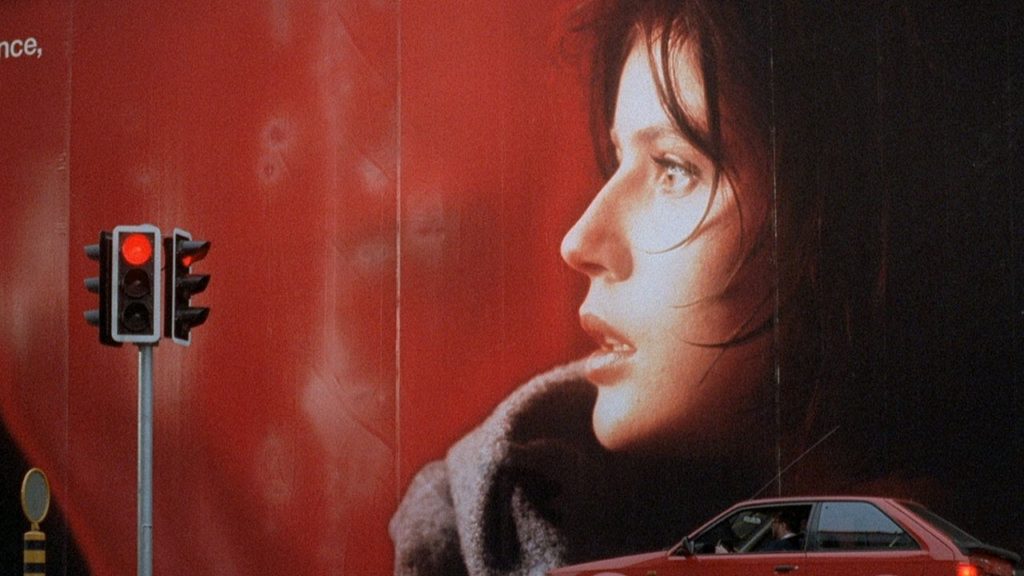
Following up on our recommended reading list, here’s the promised list of movies (some quite appropriate and relevant) to accompany social distancing, working from home, reading, relaxing, and staying both healthy and sane.
Disclaimer: these are all films I’ve written about, so the list is subjective; on the other hand, no writer would take the time to wax rhapsodic about a movie unless they have skin (and soul) in the game, literally as well as aesthetically.
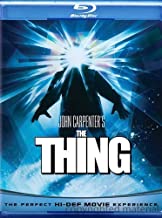
1. The Thing
It being a Carpenter production, cohesion and plot are occasionally undermined in ways that seem half-assed or ham-fisted. Still, after repeated viewings The Thing manages to work on multiple levels, and despite any nitpicking it seems impossible to improve upon. The definition of a classic, perhaps, but it is something more, something more complicated than that. It is a unique and enigmatic movie; in hindsight it is easy to understand how it evolved, over time, from a cult classic to its current status as must-own DVD material (alas, no 25th anniversary deluxe edition arrived in 2007, but the existing Collector’s Edition—from 1998—is quite satisfactory): it needed time to truly find its audience.
One scene in particular offers perhaps the best illustration of why this movie continues to resonate, and why it was not fully successful as either a slam-bam action flick or a serious drama: Blair sits alone, at his desk, running a computer simulation of the diabolically efficient way the alien is infecting his team. In less than thirty seconds, the look on his face turns from world-weary stoicism to resigned acknowledgment of the likely consequences—for the men, and the rest of the world. Interestingly (and again, ironically?) it is probable that the impetus for this particular sequence, in addition to the obvious and necessary advancement of the plot in as succinct and clear a manner as possible, was to show-off the high-tech computer programming, circa 1982. Like the over-the-top transformation scenes, it is more hilarious than harrowing to look at the extraordinarily primitive technology, today. And yet, it worked, then, and works now, because of its stark imagery: in its way, it’s ten times more terrifying to watch the simulated organism at work, one blob on a screen capturing and assimilating its prey, than it is to watch the scattered “money shots” when the creature reveals itself.
More on this masterpiece, here.
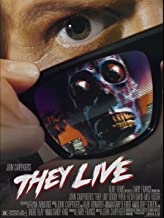
2. They Live
(John Carpenter again, already? Hell yes, and for very good reasons. He tackles the horror –both literally and figuratively– of virus and the uncertainty that accompanies contagion; with They Live he tackles how incapacitating unrestrained capitalism is, as always, affecting the least fortunate amongst us first and hardest.)
They Live was a postmodern pastiche of old-school science fiction that, for a variety of reasons, was too ahead of its time to be properly appreciated. Actually, that’s not quite accurate. It was too of its time, in 1988, and it’s even more of its time, in 2012, and it will not reach its expiration date in 2022, or 3022, if They are still amongst us—or vice versa.
What results is satire, only supersized. Hence, “the scene”: that nine minute fight sequence is the movie, the entertainment industry and America itself, in miniature: incredible, hilarious, exaggerated. That we have a wrestler, using wrestling moves in a movie is almost too meta. This is probably why it didn’t quite play in 1988 and why it could never really work, anytime. It’s at once too ludicrous and too real (a couple of blue collar guys, beating each other’s brains out, as the world rots around them and a cabal of super-rich, well-insulated freaks goes about the business of doing business).
In the final analysis, They Live is like The Matrix without the billion dollar ballet routines. And it only needs about 90 minutes to strip the glossy carcass off consumerism, infotainment, political power structures (hint: our elected officials take their orders from corporations, not the other way around), serving it all up in a visionary smart bomb that touches on McLuhan, Chomsky, Goebbels, P.T. Barnum. Carpenter’s triumph is the way he somehow distilled the best of George Orwell and Edgar Allan Poe, disguising it as farce turned bloodbath. In the end the good guy wins. Then he dies.
A lot more on They Live, and why and how it endures, here.
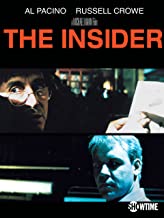
3. The Insider
(Another one that is unfortunately relevant as ever, The Insider –like The Thing and They Live before it– did not set the box office on fire, and it’s certainly in part due to the mirror it lifts up to how the sausage-making of late-stage capitalism has everything but health and security driving it, by design.)
Even before they started taking down the Marlboro Man billboards, just about everyone agreed cigarettes were bad for you. Macho associations aside, it was more a matter of freewill; not unlike drinking alcohol, certain risks are associated with legal, if unhealthy behavior. That’s America. Of course, more than a few people would have been outraged to learn how much chemical manipulation was taking place in order to make those cancer sticks even more habit- forming.
So: some dirty secrets were kept strictly under wraps, as a matter of policy. Big Tobacco counted the money and its executives testified that, to their knowledge, nicotine was not addictive. Considering the money involved, the perjury committed, and the industry’s unfettered success with litigation, only the most recalcitrant underling would dare defy its wrath.
The Insider is an unqualified artistic success, and one of the most important movies of the last ten years. It is remarkable drama, compellingly portrayed. It is also director Michael Mann’s finest film. It features a gorgeous soundtrack (courtesy of Lisa Gerrard). It boasts some of the finest acting in Al Pacino’s legendary career. And Russell Crowe not only delivers his personal best work, he turns in what is possibly the best performance since De Niro in Raging Bull. With all respect to Mann’s considerable abilities, he wisely manages to stay out of the way and let the scope of this story supply its own abundant energy. His restraint has the opposite effect of the overwrought (and overrated) Heat, which attempted to parlay an armed robbery into an opera.
With The Insider, he takes grand theater and mostly scales it down to its human elements: the people making the decisions and the people devastated by them. Forget the forever discussed showdown between Pacino and De Niro in Heat. The ongoing confrontations (initially contentious, ultimately loving) between Pacino and Crowe are effulgent. Their entire time on the screen is a two-and-a-half hour acting clinic.
More on this masterpiece, here.
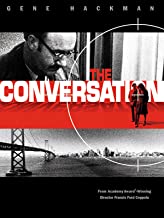
4. The Conversation
(Feeling paranoid yet? Good, here’s more fodder to fuel your sense of security…)
In Dostoeyevsky’s Notes From Underground the self-loathing narrator proposes that every man has secrets he will only reveal to friends and secrets he must keep to himself. And then there are the things he is afraid to admit even to himself, and the more decent the man, the more things he will find himself unable to confront.
In Francis Ford Coppola’s The Conversation Harry Caul (Gene Hackman) is a man less concerned with the answers to uneasy questions than the questions themselves. He is a well-regarded surveillance specialist; a self-employed spy who builds his own equipment and attracts high profile clients who will pay top dollar for his services. As he explains to his enthusiastic assistant (the always-excellent John Cazale), he is uninterested in the personal lives of his clients or what their motivations might be — he just wants to get the job done as only he can do it.
Of course, the movie is impossible to separate from the early ’70s in several important ways. For one, its inescapable political implications (Watergate, wire-tapping) and its art house aesthetic sensibility (The Conversation is one of the more durable experiments to come out of the “new wave” of Hollywood bad boys who briefly had — and took — the opportunity to make movies they way they needed — and wanted — to make them). The Conversation, perhaps more than any of his celebrated films, makes the purest case for Coppola’s genius. The movie’s disconsolate message is tempered by its director’s lack of cynicism (a refreshing trait early on that ended up marring his later work with excess sentimentality and preciousness). Coppola, who also wrote the screenplay, is perhaps the only director of that era sufficiently unselfconscious to depict a protagonist so self-conscious he is in constant danger of suffocating.
Also worth mentioning is the film’s uncanny similarities to Chinatown (also released in 1974). In both, an essentially respectable man has seen his best intentions harm others, and vows never to repeat his mistake. In both, a man realizes too late that he has gotten involved (and invested) in something far larger and more dangerous than he imagined.
If you’ve already seen the movie, you can savor the denouement, below (spoiler alert!!!)

5. Chinatown
(Speaking of Chinatown; I maintain it’s the only perfect American movie ever made.)
Chinatown does not usually make the short list of best American films. In fairness, it probably shouldn’t. It will have to settle for merely being the only perfect American film ever made. Perfect? Well, perfection is in the eye of the beholder, and the definition of perfect might include the notion that there is no such thing as perfection in art. Nevertheless, by any number of criteria, Chinatown continues to satisfy more than thirty years on. In the final analysis it’s the magnificent sum of its considerable parts: it’s tragic, it’s hilarious, it’s (at times) scary, it’s challenging, it’s complicated, it is unnerving. It is, in short, America. Or at least it does the near impossible: it articulates the symbiotic relationship between greed and power that props up capitalism, a narrative that played an ever-increasing role in 20th century America. Much could — and should — be said along these lines, and how Robert Towne’s meticulous screenplay was ideal fodder for Roman Polanski’s dark and utterly authentic vision (Polanski also deserves extensive praise for resisting the happier ending Towne wanted).
Naturally, Chinatown passes the ultimate test: is it still meaningful, today? Does it still tell us something about ourselves? Sadly, it does. Impossible as it may have been for Towne and Polanski to imagine, there would come a time where public trust of those in power deteriorated beyond even the Watergate era nadir of Nixonland. Today, as the fabricated sheen of Wall Street crumbles around us, we might ask the wizards who wrought this mess the same question Gittes asks Cross — and expect the same answer:
“Why are you doing it? How much better can you eat? What could you buy that you can’t already afford?”
“The future, Mr. Gits! The future!”
More thoughts on this one, here.

6. Goodfellas
So if we’re talking perfection, let’s talk about definitive (and, when I wrote this piece, it was two decades later; now it’s three and the verdict still stands.)
So, let’s go to the scorecard.
Most quotable movie from the last two decades? What else have you got?
Most compulsively rewatchable? Obviously.
Best soundtrack? It’s on the short list.
Sheer number of indelible scenes? Please.
Best acting, from leads to bit parts? Not even close.
Most imitated movie of the last 20 years? Not even debatable.
Goodfellas was so great its largest “fault” was its own success; that it inspired so many lame, shameless rip-offs. We see this phenomenon over and over, with movies ranging from Pulp Fiction to Swingers, but we are still seeing it with Goodfellas. Everything from the clever introduction of characters to the voiceover narration (not the use of it, but the way it is utilized), to the then-revelatory use of still-frames to, well, frame some of that narration. All of these have been copied to the point of parody — real or intended.
At the beginning of the film, Henry claims “as far back as I can remember I always wanted to be a gangster.” The tragedy of his life is not that he became one; the tragedy is that as the movie ends, and Henry stands in the (relative) safety of his suburban lawn, he still longs to be one.
What else is there, besides everything? The best way to discuss a movie this rich is to simply watch it, again, and savor all the scenes and words and sounds. In the final analysis, full credit must go to the wisest of guys, Scorsese, for pulling off a tour de force on every conceivable level: a lavish looking spectacle that never seems overly polished, a massive production where every set, every song and every role is ideally cast (super-sized props to Marty for hanging in there and remaining true to his vision of having the fairly unknown Ray Liotta play the starring role; the studio imbeciles, in their eternal anti-wisdom, wanted Tom Cruise), and a detailed examination of an alternate universe — an America of a different era, populated by people we couldn’t have otherwise understood, or ever wanted to let into our living rooms. With the considerable help of the writers, actors and crew he assembled, he obliged us to welcome these good fellas into our lives, forever.
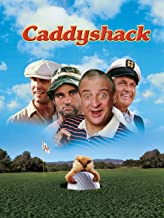
7. Caddyshack
(Okay, let’s lighten up a bit. It’s probably impossible to pinpoint what is the ultimate guy’s movie, but it’s difficult to debate that Caddyshack is, at worst, tied for #1.)
So you initially thought it might be advisable, if ironic, to discuss Caddyshack without invoking a single line from the movie. Eventually you realized that what we talk about when we talk about Caddyshack is…Caddyshack. Not quoting lines from Caddyshack to discuss Caddyshack, therefore, is only slightly less conceivable than going a single day without quoting (to others; to yourself) a line or three from Caddyshack. You are, of course, congenitally incapable of not quoting from Caddyshack. You are, after all, a male member of the genus Homo Sapiens (American species: Dude).
You’re no gentleman!
But you are also not a woman, so you can quote Caddyshack and you will defend Caddyshack.
Don’t worry about this one; if you miss it, we lose.
You arrived at the age, sometime between junior high and yesterday, where the lines you love so much from Caddyshack frequently sound funnier when your friends say them. Or when you say them to yourself. (It looks like a miraculous…it’s in the hole!). You may not know much, but you are fairly certain this is one unquestionable ingredient of a classic.
More thoughts (and movie quotes) here.

8. Bottle Rocket
The perfection of Wes Anderson’s first film Bottle Rocket might lie in the fact that is isn’t, and wasn’t necessarily intended to be, a perfect film. Anderson tried to make perfect films later on (he failed with The Royal Tenenbaums, but came as close as any director can come with Rushmore), yet nothing he’s done since has been as oddly affecting as his debut feature.
The plot, such as it is, involves an increasingly outlandish series of escapades, masterminded by Dignan, the ringleader who is all heart and not exactly what one would call a masterful mind. But the plot (as, I would argue, is so often the case with some of our more influential, if unappreciated film and fiction) is mostly a delivery device for the characters.
And, as is the case with all Wes Anderson’s films, the characters are a delivery device for the Wes Anderson aesthetic. This sensibility was still fresh and unfettered at this stage, and its propensity for preciousness, while for the most part deftly avoided in Rushmore, is in full effect throughout The Royal Tenenbaums. Bottle Rocket is, to be certain, very much a statement of purpose and a signal of things to come, just as Christopher Nolan’s Following–for instance—-is replete with images and obsessions that would come to the fore in his brilliant follow-up, Memento.
Much more on this deeply quotable, durable, and touching flick, here.

9. Rosencrantz and Guildenstern Are Dead
(Nothing like mandatory social distancing to contemplate the meaning of existence!)
Spoiler alert: Rosencrantz and Guildenstern die.
They are, in fact, already dead. And they always have been.
But you knew that already, right?
Another spoiler: You, too, shall die one day.
Here’s the rub: they didn’t know when or why, and neither will you.
But you already knew that, didn’t you?
Extended, circular interlocutions about the fragility of life or the meaning of reality or the existence of meaning itself were certainly more fashionable in the late ’60s, when this play was first presented, but you need not be obsessed by existential angst to enjoy this slippery mind-screw. Rosencrantz and Guildenstern Are Dead is not an instrument used for itching those metaphysical itches; it is the itch itself. On the page, like so many plays, it is sufficiently delightful, but brought to life (like the best plays) it sparkles. Of course, even the best plays sometimes suffer from casts, however game, that are not worthy of the material they are provided. Fortunately, this one not only made it to the pretty-big screen, it attracted two of the best British thespians of their time: Gary Oldman (who was known mostly for his role in Sid and Nancy) and Tim Roth (not really known at all, at least outside the UK, circa 1990). Perhaps most miraculous, it also features Richard Dreyfuss, who manages not to be insufferable, perhaps for the last time in his career.
The enduring impact of Rosencrantz and Guildenstern Are Dead might be the manner in which Stoppard takes on the Big Questions that philosophers, poets, priests and everyone else have agonized over for centuries and arrives at an explanation even The Bard would likely endorse: it’s not so much that there aren’t any answers (there aren’t) but that we ask the questions at all. By asking the questions, we see the silliness, we hear the humor, we observe the awful and we eventually come to understand the most important thing, the only thing that matters: we are alive.
More musings on cinema, art, and existence, here.

10. Three Colors: Red
As one might imagine, it is difficult to write about art that affects you and has impacted your life. You feel compelled to do the work justice; you’re obliged to offer encomiums without cheerleading; you’re required to summarize and celebrate, and somehow say something that might add anything to the subject at hand. Red is one of my all-time favorite movies, and I believe I make a compelling case for its myriad glories here. Above all, I sincerely encourage anyone who has yet to experience this film to, as Jimi Hendrix said, Get Experienced!)
For those uninitiated, the colors, taken from the French flag, and the number three figure prominently throughout the films on the literal levels, obviously, but they resonate on subtle levels, as well. Three films, three locations (Paris, Warsaw, Geneva), three exquisite actresses (Juliette Binoche, Julie Delpy, Irene Jacob), three concepts taken from the French Revolution: liberty, equality, fraternity.
Taken individually, each film succeeds spectacularly — and in spectacularly separate ways — as a standalone work. Being a trilogy, filmed at a superhuman clip between 1992 and 1994, the thematic concerns and not-so-random coincidences add up and interact in ways that still exhilarate even — or especially — after multiple viewings.
The single theme threading these three works is the act of connecting. Human connections, missed connections, chance connections and the types of inscrutable flukes that invoke both fate and faith. The colors that give the films their titles are utilized in myriad ways to comment on the connections and coincidences these characters experience.
Red (1994), as many who have seen it multiple times would agree, is not simply the ultimate triumph of Kie?lowski’s career, but one of the supreme cinematic achievements of the last quarter-century. As a technician, Kie?lowski is awe-inspiring; as a deeply compassionate artist, he manages to instigate in the viewer feelings ranging from discomfort, amusement, empathy to, ultimately, catharsis. As the film — and trilogy — concludes, certain scenes and situations come full circle granting a closure that satisfies on aesthetic levels, as well as profoundly personal ones.
Red richly embodies the special potential that cinema can attain: incorporating music, literature (the script), image and action, the endeavor is at once an approximation of life and something more. It is artifice, but like the best creation, it functions as a reflection on existence and a sort of paradigm to which we might aspire.
Kie?lowski, in other words, succeeds entirely on mere artistic levels, but his recurrent themes of compassion, connection and reconciliation achieve a synthesis so fully realized as to seem transcendent. Transcending what, exactly? The limitations of the medium and the limitations of our imaginations and ability to conceive liberty, equality and fraternity in ways not reliant on superstition or dogma. Ultimately Kie?lowski, who eschewed explicit political and religious tautology, is making a case for faith that is wholly human — and humane.
And, while White suffers in comparison to the other two, Blue also receives my highest possible recommendation. Plus, it boasts the effulgent Juliette Binoche at her absolute peak.
Much more on the entire trilogy, here.
Part Two of Required Viewing, coming soon!
